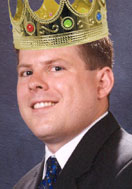 I have refrained from commenting on this topic because I had high hopes of wading through the public hearing transcripts, site application, letters recommending passage/denial, etc., etc. But, alas, I simply don’t have the time to do that.
I have refrained from commenting on this topic because I had high hopes of wading through the public hearing transcripts, site application, letters recommending passage/denial, etc., etc. But, alas, I simply don’t have the time to do that.
But there are some things I know about the landfill that I don’t need to read 5,000 pages to discover: it’s just outside the city close to residential neighborhoods, it sits over an aquifer that supplies most of our drinking water (or to be precise, “sands hydrolically connected to the San Koty aquifer), and it has hazardous waste buried in it including heavy metals like lead and mercury.
Based on those facts, plus things I’ve read on both sides of the issue (Journal Star, Bill Dennis, PDC, Families Against Toxic Waste, etc.), I think the common sense position is to vote this down. I’m primarily opposed to its placement, not the mere existence of it.
But there is one other thing I’m opposed to, and that’s the fact that they receive most of their hazardous waste from outside this area. Proponents of the hazardous waste landfill like to throw the n-word (NIMBY) at opponents, as if we Peorians are just creating all this hazardous waste and want someone else to take it off our hands.
In reality, the exact opposite is the case.
We’ve been taking on the toxic waste of ten other NIMBY states. 84% of the hazardous waste PDC collects is from outside of Peoria. I think we’ve been more than generous by having all that filth in our “backyards” these past 15 years. It’s time for other cities and states to step up to the plate and take responsibility for their own hazardous waste.
There’s plenty of legal justification for voting this project down based on risk to health and safety and the adverse impact it would have on property values. The county board should deny PDC’s request for expansion.

 Let’s play the old game, “Who Am I?”
Let’s play the old game, “Who Am I?” The Journal Star had
The Journal Star had 
